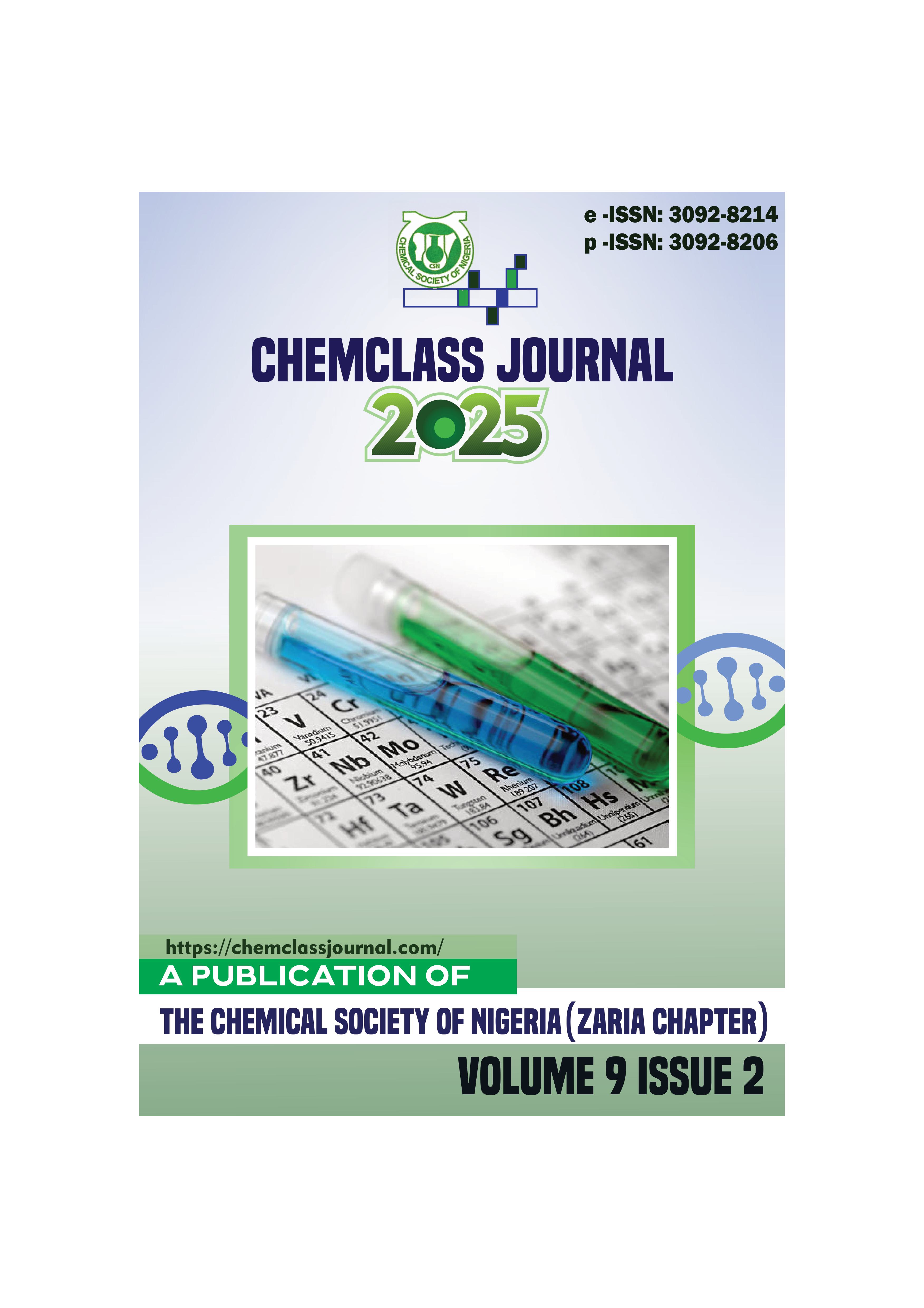Biosynthesis of Silver Nanoparticles Using Ficus benjamina Aqueous Leaf Extract and their Antimicrobial Activity
DOI:
https://doi.org/10.33003/chemclas-2025-0902/182Keywords:
Green synthesis , Silver nanoparticles , Ficus benjamina, Antimicrobial activity , UV–Vis spectroscopyAbstract
Silver nanoparticles (AgNPs) are widely recognized for their unique physicochemical properties and potent
antimicrobial activity. However, traditional chemical synthesis methods often involve toxic reagents and
energy-intensive processes. Green synthesis offers a safer and environmentally friendly alternative by using
plant-based materials. Ficus benjamina (weeping fig), rich in phytochemicals like flavonoids and alkaloids,
presents a promising option for the biosynthesis of due to its known medicinal and antimicrobial properties.
Bio-synthesized Ag nanoparticles using Ficus benjamina leaves were characterized using UV–Visible
spectroscopy over a 48-hour period. Antimicrobial efficacy was tested against Staphylococcus aureus,
Escherichia coli, and Mucor spp using the disc diffusion method, and inhibition zones were compared with
standard drugs (ciprofloxacin and ketoconazole). The UV–Vis spectral analysis confirmed the synthesis of
AgNPs with a maximum absorbance at 395 nm, consistent with values reported in previous literature. The
synthesized AgNPs exhibited concentration-dependent antimicrobial activity, with inhibition zones
decreasing from 100% to 25% AgNP concentrations. While the AgNPs were less effective than standard
antibiotics, they still demonstrated significant inhibition, particularly against S. aureus (20mm – 27). The
results were consistent with related studies reporting similar antimicrobial trends. This study confirms the
successful green synthesis of AgNPs using Ficus benjamina extract, offering an eco-friendly route to
producing nanoparticles with antimicrobial properties. Though not as effective as conventional drugs, the
biosynthesized AgNPs show promising potential as alternative antimicrobial agents when optimized.





 ChemClass Journal
ChemClass Journal
